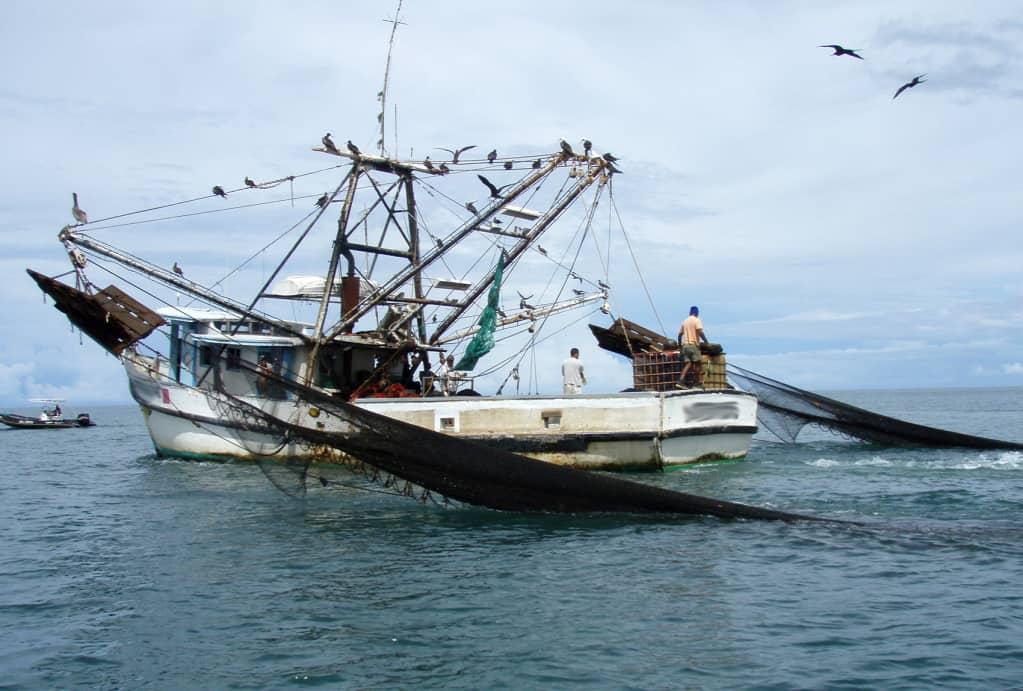Trawl fishing, a method of fishing that involves dragging nets along the sea floor to lift everything in their path, has been used since 1376. In the case of Mexico, they have been used since the beginning of the 20th century, mainly for shrimp and scale fisheries.
Although one of the biggest criticisms of this fishing gear is that it is not selective, in Mexico, modifications have been made to the art and regulations to reduce environmental damage. These have been modified by Mexican fishermen and miners, based on nets originally used in the United States of America. In addition, FAO, INAPESCA and civil society organizations have invested in research to develop new, more selective gears that reduce fuel costs, such as the FAO/INAPESCA project “Sustainable management of bycatch in shrimp trawling in Latin America and the Caribbean” (REBYC II LAC)”.
How is trawling regulated?
Currently, the shrimp fishery, which is where trawls are used to the greatest extent, is regulated by the Official Mexican Standard NOM-002-PESC-1993. This was modified in 1997 and 2006. In the same way, there are regional regulations that establish the use of selective fishing systems, as well as a refuge area for the protection of various biological species in the marine belt from 0 to 9.15 m deep, where fishing with the trawl system is prohibited.
For its part, there are also regulations in international agreements that Mexico has signed. For example, in the T-MEC it is mentioned that the parties will promote the conservation of species such as sharks, turtles and marine mammals through better conservation and fisheries management. The measures include specific studies of fishing gear, data collection on by-catch and promotion of actions to reduce it.
In Mexico: who does trawling?
According to the permits and concessions granted by CONAPESCA, deep-sea fishing makes greater use of trawls. 47% of larger vessels, some 1,419 boats, use trawls in 2021, mostly for shrimp fishing. Although there are different types, such as mid-water trawling and bottom trawling, the type of trawling is not specified in the permits and concessions.
In contrast, smaller boats use this fishing gear less frequently. There are 615 artisanal boats that have permits that use it in 2021. In Sinaloa, the entity with the highest shrimp production, there is no smaller vessel that uses trawls with permission. This is due to the creation of superior networks in that entity in 2006.
The suripera nets were derived from technical training that resulted in the making of a fishing net with the same mesh as the stingrays, but with a drag system driven by wind or sea current, in nets with trap bags. These nets are more selective, largely excluding incidental fishing of other species and reducing fuel use when driven by the wind.
Where is the trawl for shrimp done?
Because most shrimp trawls are for larger vessels, analyzing public data from the Satellite Fishing Vessel Location and Monitoring System (SISMEP) can give us an idea of where the trawling takes place in Mexico. It is worth mentioning that according to NOM-062-PESC-2007, all major permit or concession vessels are required to report information to SISMEP.
According to SISMEP data, in the case of shrimp trawling by larger vessels, the decrease in vessels with a current permit reporting information stands out. During the months of September, when the ban on shrimp in the Pacific was lifted, in 2018 only 7% of vessels with permits did not report information to SISMEP, however, this percentage increased to 28% in 2021. This may be due to a decrease in the number of shrimp boats going out to fish or to a sub-report from SISMEP.
In addition to a decrease in the number of vessels that did not report information, there is also a notable decrease in trips. In the following graphic, you can explore the trips reported by these vessels from 2018 to 2021.
This decline in shrimp vessel activity is notable both in the Gulf of Mexico and on the Pacific coast. Although fishing boat routes do not indicate fishing effort, it can help us to see what the scope of the activity is.
Public permit information and SISMEP are essential tools for understanding in greater detail where trawling takes place. We still need to explore what the effects have been on ecosystems, to what extent regulation is being complied with and what kind of technological innovations can help to make better use of the shrimp fishery in Mexico.



Comentarios (0)